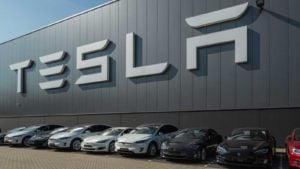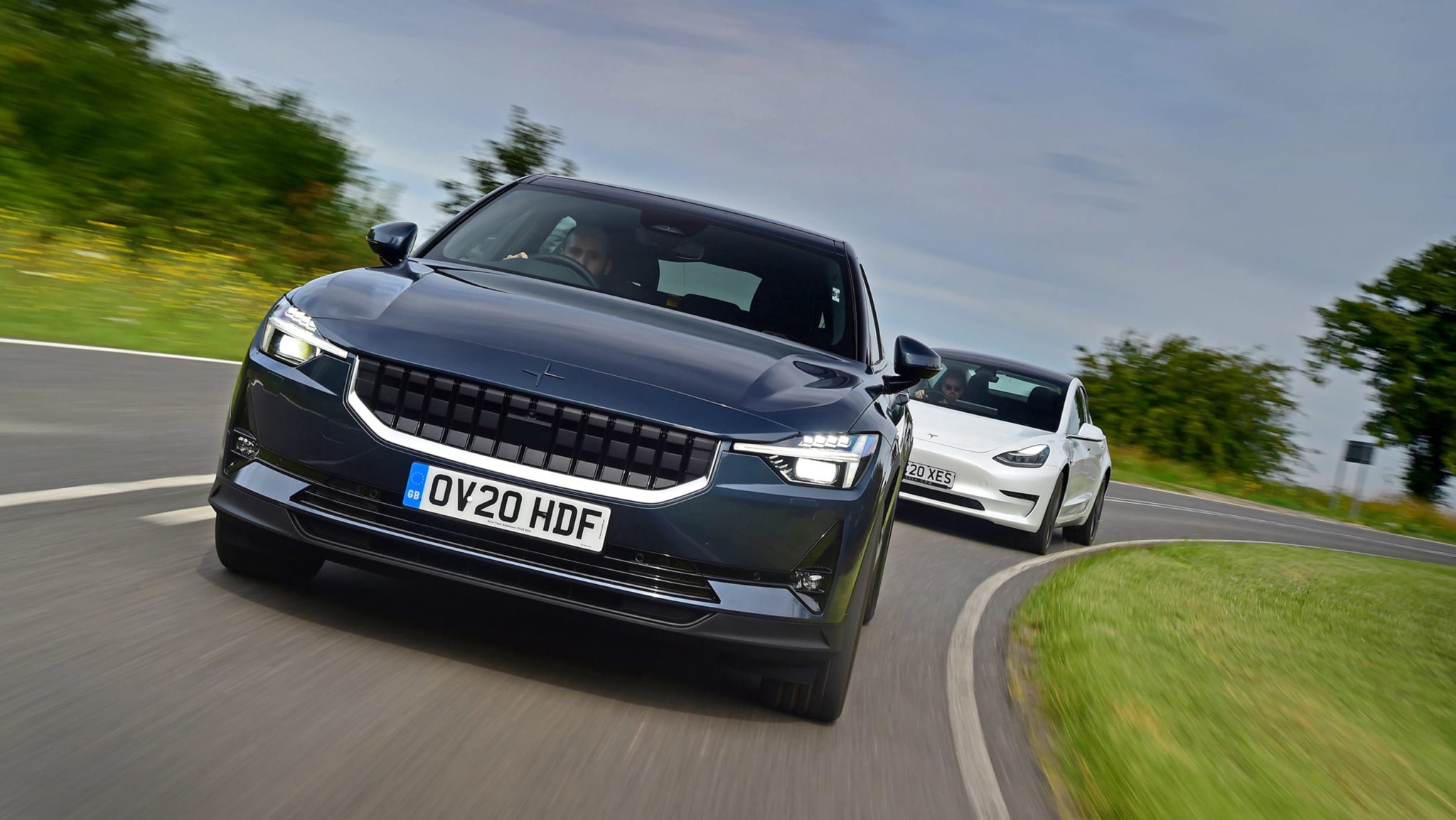Read The Full Article On: Investorplace
GLJ Research thinks TSLA stock is going to drop to $87, but that has zero chance of happening
The Tesla (NASDAQ:TSLA) stock short-sellers and bears don’t know how to quit. Research firm GLJ Research — one of the many equity research firms that has been saying sell Tesla stock for years as the stock has soared like a rocket-ship — recently made headlines for calling the TSLA stock price “detached from reality“.

Source: Shutterstock
And by detached, they mean entirely detached.
GLJ Research thinks Tesla stock will plunge from over $2,000 today, to $87 in a year. That’s a 95% drop in Wall Street’s hottest stock.
Will it happen? Zero chance.
Here’s why.
The Bear Thesis
First, let’s quickly run over the GLJ bear thesis on TSLA stock.
The research firm claims that the Tesla growth story is broken, citing that revenues peaked in the fourth quarter of 2018 and that ever since, rising competition has diluted demand and eroded market share. At the same time, GLJ Research does not believe Tesla to be a technology leader in the EV space, and thinks the self-driving hype is overdone.
To that end, GLJ Research doesn’t believe Tesla’s revenue growth potential is as robust as many think.
Meanwhile, GLJ also believes the Tesla business model is an unprofitable one, and that recent profits are simply a byproduct of regulatory EV credits. The research firm expects Tesla to drop back into the red once those EV credits phase out.
Plus, the research firm points out that Tesla has twice the market cap of Volkswagen(OTCMKTS:VWAGY), yet Volkswagen sold 11 million cars last year to Tesla’s 370,000 deliveries.
All in all, these bearish observations lead GLJ to slapping a $87 price target on TSLA stock.
Market Share is Rising
The claim that the Tesla growth narrative — i.e. revenues and market share — peaked in late 2018 is misleading, short-sighted and lacks context.
Automotive revenues did peak in the fourth quarter of 2018 at $6.3 billion and have been dropping ever since throughout 2019 and the first half of 2020. But that’s because of two things outside of Tesla’s control: 1) governments across the globe reduced EV subsidies in 2019 which diluted global EV demand, and 2) the Covid-19 pandemic killed auto demand in the first half of 2020.
Indeed, if you consider the context here, the story is much prettier. Based on market data from EV Volumes and company delivery data from Tesla’s SEC filings, Tesla’s global market share of the EV market increased from ~8% in 2017, to ~12% in 2018, to ~16% in 2019. Based on current projections, Tesla’s EV market share will expand again this year, to over 17%.
So, the drop in Tesla revenues over the past few quarters isn’t a Tesla problem. If anything, Tesla is actually executing flawlessly and dramatically increasing global market share. Instead, what’s happening is that the EV market has been choppy.
This chop will end soon.
Governments globally have broadly reaffirmed EV subsidies in 2020, with structural promises to promote continued EV adoption over the next several years. The Covid-19 pandemic is fading out in terms of impact on consumer spending. Low rates should help boost auto demand everywhere. Plus, the category is growing, thanks to improving technology, expanding charging infrastructure and falling battery costs.
Tesla is at the epicenter of all this, launching new cars, refreshing old cars, expanding geographic reach and building out production capacity globally.
So, no, the Tesla growth narrative is not broken. If anything, it’s just getting started.
Technology Leader
GLJ Research does not believe Tesla to be a technology leader in the EV space.
Yet Tesla’s three electric cars — the Model X, Model 3 and Model S — are number one, two and three in the entire EV category in terms of driving range. Plus, these cars charge much faster than other EVs.
Clearly, Tesla is doing something with battery technology that no one else is doing. Or maybe they are just doing it better than everyone else. Either way, the numbers speak for themselves here. Tesla has a clear and convincing lead in battery EV technology.
That lead will only widen over the next several years, because top talent is increasingly attracted to the Tesla brand.
I can’t exactly tell you why. There’s a myriad of reasons. Maybe it’s the eccentricity and uniqueness of Elon Musk. Or the soaring stock price. Or the purpose-driven mission to change the world and save the planet. Perhaps it’s the fact that engineers are the heartbeat of the organization, not marketers or PR guys.
Of course, surveys show this. But it’s also obvious. Imagine that you’re a recent engineering grad from MIT or Caltech. Do you want to go work at Tesla, a brand known for its innovation and next-gen tech? Or Ford (NYSE:F), a legacy company that hasn’t been known for anything innovative in a long time?
The choice is painfully obvious.
Top talent is what enables technological improvements and breakthroughs. So the more top talent Tesla attracts, the wider its technology lead will become, and the better Tesla’s cars will be relative to the competition in terms of driving range, charging time and overall performance.
Branding Leader, Too
One can also not simply ignore that Tesla is the coolest automobile brand in the world.
Again, this is for a myriad of reasons. Arguably the same reasons that Tesla attracts top talent. Elon Musk. Breakthrough innovation. Attractive long-term goals and ambitions.
But consumers — young consumers, in particular — love the Tesla brand.
It stands for more than a just car brand. At this point, it’s an aspirational brand that stands for innovation, disruption and moving the world forward.
Who doesn’t want to get behind those things?
It should be no surprise, then, that Tesla has cultivated second-to-none brand equityand loyalty.
This second-to-none brand equity and loyalty — coupled with superior battery technology — will enable Tesla to sustain its early leadership in what will one day be a massive global EV market, and ultimately equate to the company selling millions of EVs annually at favorable price points and margins.
Strong Gross Margins
Tesla has historically been a money losing business.
But so are all capex intensive businesses that haven’t reached scale yet. Fortunately, Tesla is reaching scale, and over the past four quarters, Tesla has been consistently profitable.
Sure, some of this profitability is driven by — as GLJ Research points out — regulatory credits.
But automotive gross margins last quarter were above 25%. Ford and General Motors(NYSE:GM) typically hover around 10% to 15% gross margins. Both of those companies are regularly profitable, and they spend an arm and a leg on advertising (Tesla spends zero dollars on marketing).
So, Tesla is 10 to 15 points more profitable than legacy automobile makers, and runs on a slimmer opex model since the company doesn’t advertise in an industry that advertises a ton.
How does that not add up to big profit margins at scale?
Indeed, it does.
Auto and truck companies typically spend about 7-8% of revenues on opex. At scale, Tesla should look pretty similar. On 25% gross margins, you’re talking 15%-plus operating margins.
Self-Driving & Solar Upside
Meanwhile, Tesla is much more than just a company that sells electric cars.
The company also has a burgeoning autonomous vehicle business that is very unique (Tesla powers its self-driving with cameras, not with LIDAR sensors which is standard across the industry) and has some attractive features (Tesla has more data than anyone else when it comes self-driving miles, and because data powers self-driving algorithms, this more robust data-set can be used to create better self-driving tech).
So don’t write off the self-driving business. This business could one day be part of a very valuable AV software stack which significantly increases average sales prices and profit margins on Tesla cars
At the same time, Tesla owns one of the largest solar businesses in the world, at a time when solar energy costs are rapidly falling and storage technology improvements are making ubiquitous deployment more broadly feasible.
In sum, these two businesses could easily add significant firepower to Tesla’s long-term growth narrative on top of its already robust core EV growth narrative.
Bottom Line on Tesla Stock
Is TSLA stock going to drop below $100 because the Tesla growth narrative is broken? No. Zero chance. This is a long-term winner. Over the next decade, it’s not going to $100. It’s going to $3,000.
So what should you do with TSLA stock?
The rally has come very far, very fast. The valuation is extended. And this is a long, long-term growth company. So there’s no need to rush in and chase this rally here and now.
Just be patient. If you own, stay the course and wait for a 10-20% pullback to add more. If you don’t own, stay on the sidelines and wait for a 10-20% pullback to create a position.
But don’t sit on your hands hoping for a 95% plunge.
It’s simply not going to happen.

